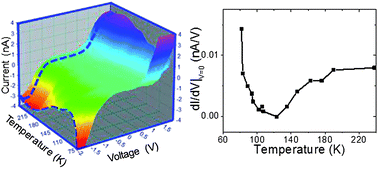A persistent metal–insulator transition at the surface of an oxygen-deficient, epitaxial manganite film
Abstract
The oxygen stoichiometry has a large influence on the physical and chemical properties of complex

* Corresponding authors
a Materials Science and Technology Division, Oak Ridge National Laboratory, Oak Ridge, Tennessee 37831, USA
b Institute of Physics, Chinese Academy of Sciences, Beijing, China
c
Center for Nanophase Materials Sciences, Oak Ridge National Laboratory, Oak Ridge, Tennessee 37831, USA
E-mail:
gaiz@ornl.gov
d State Key Laboratory of Surface Physics and Department of Physics, Fudan University, Shanghai 200433, China
The oxygen stoichiometry has a large influence on the physical and chemical properties of complex

 Please wait while we load your content...
Something went wrong. Try again?
Please wait while we load your content...
Something went wrong. Try again?
P. C. Snijders, M. Gao, H. Guo, G. Cao, W. Siemons, H. Gao, T. Z. Ward, J. Shen and Z. Gai, Nanoscale, 2013, 5, 9659 DOI: 10.1039/C3NR02343E
To request permission to reproduce material from this article, please go to the Copyright Clearance Center request page.
If you are an author contributing to an RSC publication, you do not need to request permission provided correct acknowledgement is given.
If you are the author of this article, you do not need to request permission to reproduce figures and diagrams provided correct acknowledgement is given. If you want to reproduce the whole article in a third-party publication (excluding your thesis/dissertation for which permission is not required) please go to the Copyright Clearance Center request page.
Read more about how to correctly acknowledge RSC content.
 Fetching data from CrossRef.
Fetching data from CrossRef.
This may take some time to load.
Loading related content
